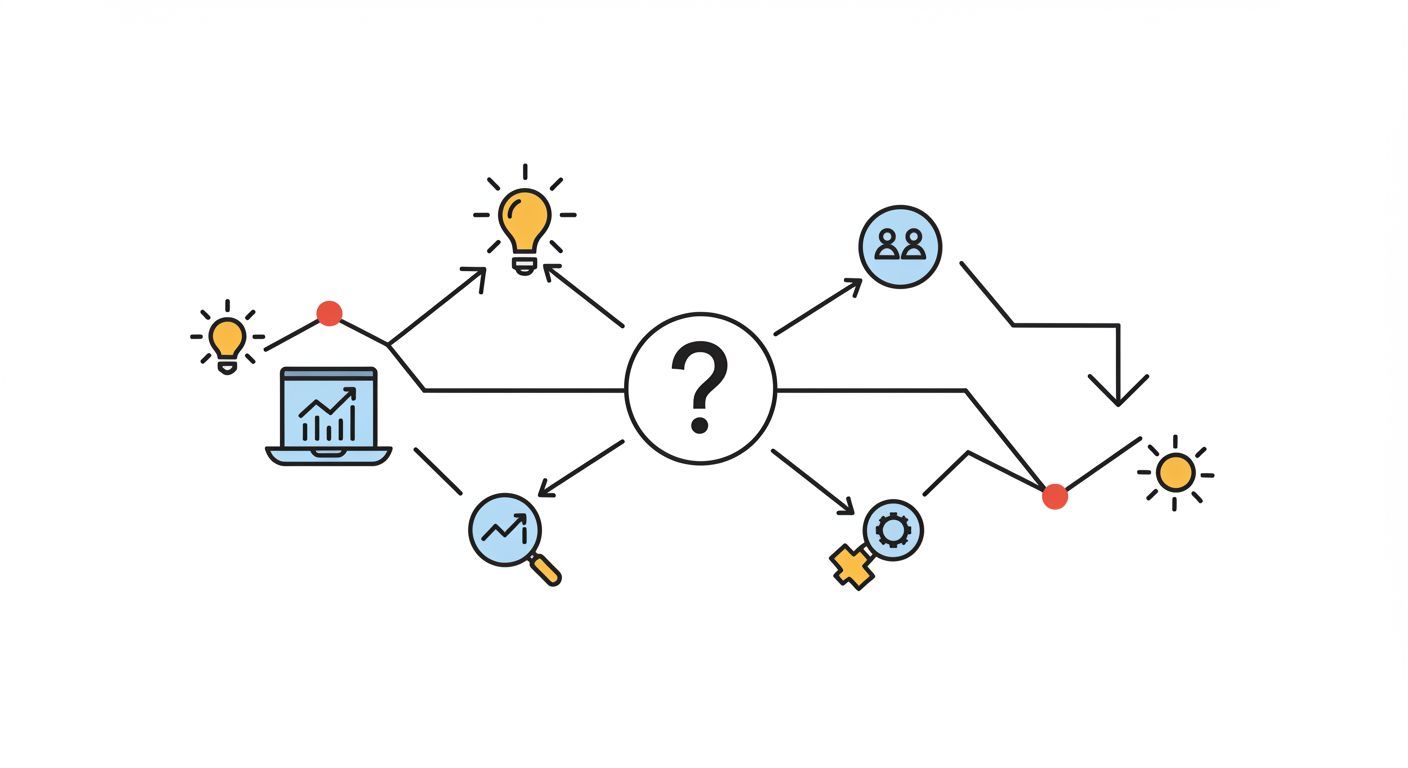The Tale of Two Foundations: Building Your Marketing Bedrock as a Local Business
In the world of marketing, it’s easy to get distracted by the latest trends—flashy ad campaigns, viral social media challenges, and complex sales funnels. But as the FADA® marketing framework teaches, these efforts are like building a skyscraper on sand if you don't start with the first, most critical component: a solid Foundation. A strong foundation defines who you are, what you do, and where customers can find you, ensuring that every dollar and hour you invest in marketing has the best chance of success.

While the principles of a great foundation are universal, its construction looks very different for a local coffee shop in Houston versus a global e-commerce store. For a brick-and-mortar business, the foundation isn't just about existing online; it's about being deeply embedded and easily discoverable within a specific geographic community.
The Universal Blueprint: Core Foundation Principles
First, let's cover the basics that apply to every business. A marketing foundation primarily consists of three digital assets:
- Your Website: This is the central hub of your digital presence. It needs to be clear, professional, mobile-friendly, and focused on how you solve your customers' problems.
- Your Social Media Profiles: These are your brand's outposts for community engagement. Your profiles should be complete, professional, and consistent with your website's messaging.
- Your Business Citations (Listings): This is your official record across the web on platforms like Google, Yelp, and Apple Maps.
The goal for any business is to use these assets to establish credibility and trust before spending money on advertising. However, the strategy behind building them diverges significantly based on whether your customers walk through a physical door or visit a borderless website.
The Brick-and-Mortar Foundation: Winning the Neighborhood
For a local business, your entire foundation must be hyper-focused on geography. Your audience isn't "everyone"; it's everyone within a reasonable driving or walking distance.
Website: The Digital Storefront
A local business's website must scream "local." While a clean design and clear messaging are vital, the most important information is your location, hours, and phone number.
- Action Step: Ensure your full address and a local phone number are prominently displayed on your homepage and in the website's header or footer. Create a dedicated "Contact Us" page with an embedded Google Map to your location. This simple step is crucial for both user experience and local search engine optimization (SEO).
Business Listings: Your Most Powerful Local Tool
For a brick-and-mortar business, business citations are not just important—they are the bedrock of your local discovery. Consistency is the golden rule. Your Name, Address, and Phone number (NAP) must be written exactly the same way across every online directory.
The most critical listing is your Google Business Profile. This is your digital billboard on the world's largest search engine. A complete and optimized profile—with accurate hours, services, high-quality photos of your storefront, and active responses to customer reviews—is non-negotiable for appearing in local map searches.
- Action Step: Claim and fully complete your Google Business Profile today. Then, search for your business on other key directories like Yelp and Apple Maps to find and correct any inconsistencies in your NAP information.
Social Media: The Community Megaphone
A local business should use social media to become part of the local fabric. While an online brand might post about broad industry topics, your content should be rooted in the community.
- Action Step: Instead of just posting sales, share photos of your team participating in a local festival, highlight a neighboring business you partner with, or feature a regular customer (with their permission). The goal is to be seen as "the neighborhood spot," not just another business. For B2C businesses, platforms like Facebook and Instagram are often most effective.
The Online Business Foundation: An Audience Without Borders
Now, consider a business with no geographical ties, like a software company or a national direct-to-consumer brand. Their foundation is built not on a physical location, but on topical authority and niche expertise.
- Website: Location details are minimal. The focus shifts entirely to the problem they solve for a specific type of person, regardless of where that person lives. The website is optimized for keywords related to their industry or product, not "near me" searches.
- Business Listings: Local directories like Yelp are far less important. Instead, they focus on industry-specific directories, software review sites like G2 or Capterra, or national business registries. NAP consistency for local SEO is not a primary concern.
- Social Media: Their community isn't geographic; it's based on shared interests. A company that sells project management software will create content for project managers everywhere, building a global community around the topic of productivity.
Conclusion: Know Your Battlefield
Building a strong marketing Foundation is the essential first step for any business, but the architecture must match the business model.
A local, brick-and-mortar business must construct a foundation designed to dominate a specific geographic area. Its success is measured by its visibility to nearby customers. An online, borderless business builds its foundation to establish authority within a global topic or niche.
By understanding this key difference, you can focus your time and resources on what matters most, creating a solid bedrock upon which your future Awareness, Differentiation, and Action campaigns can be successfully built








